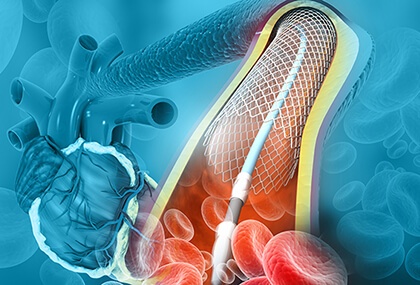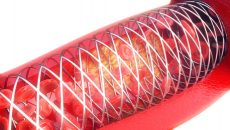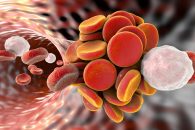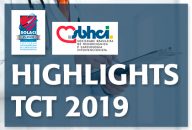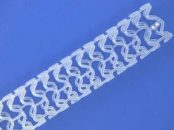The novel technology of drug-eluting stent Supreme was designed to synchronize antiproliferative drug release and leave a base behind to promote healing. Accelerated endothelial healing after antiproliferative drug release may limit the long-term inflammatory response. This multicenter, single-blind study included 1600 patients who were randomized 2:1 to receive drug-eluting stent Supreme vs. a classic permanent-polymer everolimus-eluting…
ELUVIA: DES in Complex Femoropopliteal Lesions
Paclitaxel-eluting stent Eluvia showed promising results after two years with a revascularization freedom rate of 80% despite the fact that these were complex femoropopliteal lesions. As the safety of paclitaxel-eluting devices becomes more consistent, more studies on its efficacy are being published. Back in 2018, the safety of paclitaxel-eluting balloons and stents was under scrutiny…
Current DES Performance: Is There Room for Improvement?
Head-to-head comparison of current drug-eluting stents (DES) showed contradictory results that led us to believe, for years, that we had reached a plateau. This feeling was also fostered by the disappointment caused by Absorb and bioresorbable-polymer stents. However, this recent article featured in JACC Interventions shows a light at the end of the tunnel with…
In-Stent Restenosis Treatment: Meta-Analysis of 10 Randomized Studies
The best strategy to treat in stent restenosis continues to be a dilemma. A new drug eluting stent (DES) seems to be the simplest treatment, even though it adds metal layers that will make it harder and harder to retreat. Drug coated balloons might be a viable alternative seeing as it seems to enable retreatment,…
ISAR-TEST-5: 10 años de los DES con polímero vs sin polímero
After 10 years, unstable or chronic coronary patients revascularized with drug-eluting stents (DES) had similar, very good outcomes regardless of whether the DES did or did not have a polymer, according to the ISAR-TEST-5 study, recently published in J Am Coll Cardiol. The 10-year device-oriented endpoints occurred in 43.8% of patients treated with a polymer-free sirolimus-eluting…
Stenting of Lipid-Rich vs Fibrous and calcified Plaques: Different Prognosis?
Coronary PCI with contemporary drug eluting stents (DES) in lipidic-rich plaques were not associated with increased periprocedural events at long term compared against plaques with no significant lipidic composition. This study recently published in J Am Coll Cardiol looked into the association between lipidic rich plaques detected by near-infrared spectroscopy (NIRS) and clinical events in…
Onyx ONE: More Options for Patients at High Risk for Bleeding
Since November 2015, when the LEADERS FREE was published in NEJM, polymer-free drug coated stents had undoubtedly been the best treatment for patients at high risk of bleeding. The benefit was owed to the safety and efficacy of the polymer-free biolimus coated stent (also called umirolimus) vs. bare metal stents in the context of just…
Safety of Paclitaxel-Coated Balloons in Peripheral Vascular Disease
Everybody keeps wondering whether drug-coated balloons can actually increase mortality. If that is the case, there is an even harder question in need of an answer: what would be the physiopathology for such increase in mortality? As a lukewarm message, the US Food and Drug Administration recommended a special informed consent form when these devices…
TCT 2019 | Onyx ONE: Durable Polymer vs. Polymer-Free Stent with Only One Month of Dual Antiplatelet Therapy
Courtesy of the SBHCI. This is the first randomized study comparing a durable-polymer drug-eluting stent (zotarolimus-eluting stent Onyx) and a polymer-free drug-eluting stent (biolimus-A9-coated stent BioFreedom), with only one month of dual antiplatelet therapy in patients at high risk for bleeding. Onyx ONE was a study conducted at 84 sites that randomized 1:1 2000 total patients at…
DES with Bioresorbable Polymer vs. Bare Metal Stents in Primary PCI
Long after myocardial revascularization guidelines had established no medical reason justifies the use of bare metal stents (BMS), along comes this study to refresh the old trials comparing drug eluting vs bare metal stents in the context of primary PCI. The problem for many countries is that primary PCI obviously occurs in the context of…
